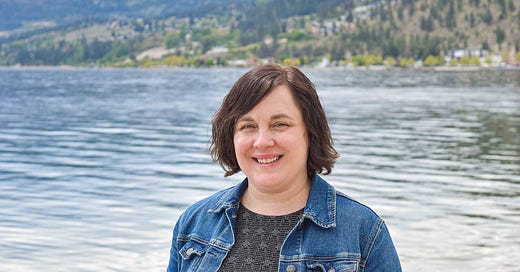How Freelancers Can Work with Small Non-Profits (and Stand Out While Doing It)
An Interview with Gail Gromaski
What does it take to land freelance work with a small, community-based non-profit—and actually make the experience a great one for both you and the client?
To find out, I spoke with Gail Gromaski, former executive director of a community arts council. In this candid interview, Gail shares what small non-profits look for when hiring freelancers, what makes someone stand out (or fall short), and how freelancers can set themselves up for long-term success with mission-driven organizations—even when budgets are tight.
Whether you’ve always wanted to support causes you care about or you're curious about how to pitch your services to smaller organizations, Gail’s insights are a must-read.
Gail Gromaski, former executive director of a community arts council, is now a freelance marketer and creator of Good Noms, Honey!, a food blog sharing clean eating recipes—many made in the Instant Pot or air fryer—with options for special diets like Paleo, low carb, gluten-free, low FODMAP (IBS-friendly), and more. The following reflects her personal experience and not the views of any organization she has worked with, past or present.
Background and Role
Briefly describe your role as a non-profit executive director and the kinds of projects you oversaw
I was the non-profit executive director of a small, community-based arts organization whose mission was to advocate for and promote the work of local artists of any art form—whether it be visual, theatrical, musical, or even culinary—and to engage the public in the arts. We achieved this through operating a community art gallery that had rotating art exhibitions, hosting a spring and summer-long concert series, seasonal art markets, an annual awards event and educational workshops for artists, and lots of other activities.
It was a lot to juggle with very limited resources, but the work could be really rewarding. Whether it was helping an artist show and sell their work for the very first time, giving local musicians a stage to share their music, or recognizing an artist for a lifetime of incredible contributions, this small organization enhanced the lives of thousands of people each year through the arts—and still does.
What kinds of communications or content needs did your organization typically have?
A lot of our communications needs were focused on promoting our art gallery and events through press releases, social media posts, and email newsletters. We were also regularly corresponding with artists, vendors, and volunteers, plus handling fundraising efforts, such as reaching out to potential sponsors and writing grants.
Working with Freelancers
In what situations did your non-profit bring in freelance writers, editors, or other communications professionals?
We brought in freelancers primarily to help us in grant writing, and fundraising, and to perform administrative tasks related to event planning.
What made you decide to hire a freelancer instead of keeping the work in-house?
We hired freelancers when our existing staff, board, or volunteers didn’t have the skills or time needed to meet important goals. I learned grant writing over time, but honestly, it’s a specialized skill requiring focus and time that I didn’t have much of when I first started at the organization. Fundraising was also an ongoing need, and in putting on over 50 events per year, we often needed help with the behind-the-scenes tasks that come with event planning.
Keep reading with a 7-day free trial
Subscribe to Happy Freelancing with Heidi Turner to keep reading this post and get 7 days of free access to the full post archives.




